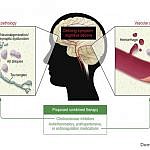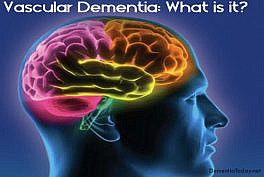Functional Imaging

Functional imaging methods used in research on aging, mild cognitive impairment, and dementia of the Alzheimer type include single-photon emission computed tomography (SPECT), positron emission tomography (PET), and functional magnetic resonance imaging (fMRI). Positron emission tomography and single-photon emission computed tomography use radioisotope tracers to detect brain metabolism or blood flow. Functional magnetic resonance imaging is a method that indicates regions of activation by detecting changes in blood oxygenation in capillaries. Normally, brain metabolism, blood flow, and neuronal activity are tightly coupled. The extent to which this relationship is altered in normal aging and DAT requires further investigation (D’Esposito et al. 1997; Ross et al. 1997; Johnson et al. 2001).
Functional imaging research involves several types of study design. Resting state studies examine metabolism or activity in various regions of the brain without engaging the participants in a particular activity or cognitive task.
Other studies correlate resting state activation with neuropsychological status on tests completed outside of the scanner. Finally, activation studies examine patterns of brain activity associated with cognitive activities in which the participant engages during scanning.
Resting State Single-photon Emission Computed Tomography and Postitron Emission Tomography Studies
Numerous resting state positron emission tomography studies of regional cerebral metabolic rates for glucose and oxygen indicate hypometabolism in all association cortices in dementia of the Alzheimer type, with temporoparietal regions generally most affected early in the disease (Herholz 1995; Pietrini et al. 2000; Coleman 2001). Bilateral hippocampal hypometabolism has also been reported in some (Perani et al. 1993) but not all (Ishii et al. 1998) studies. By contrast, primary sensory and motor areas and subcortical gray matter show relative metabolic preservation (Herholz 1995; Pietrini et al. 2000). Even in persons with early stages of DAT or with MCI, a similar pattern of hypometabolic regions has been demonstrated (Haxby et al. 1990; see Almkvist and Winblad 1999 for review). Using PET, DeSanti and colleagues (2001) showed metabolic reductions in both MCI and DAT relative to healthy age-matched controls. Metabolic reductions in the hippocampus and anterior parahippocampal gyrus discriminated persons with MCI from controls, whereas more widespread reductions in temporal regions of interest discriminated persons with DAT from those with MCI.
- Normal Aging & Dementia
- Concepts and Criteria
- Normal Aging
- Age-associated Memory Impairment
- Age-associated Cognitive Decline
- Mild Cognitive Impairment
- Diagnose dementia
- Cognition and Cognitive Testing
- Memory Impairment
- Executive Ability
- Visuospatial/Constructional and Visuoperceptual Abilities
- Praxis
- Neuroanatomy
- Structural Imaging
- Hippocampus
- Entorhinal Cortex
- Other Structural Changes
- Functional Imaging
- Functional Activation Studies
- Clinical Conclusions
- Acknowledgments
The general pattern of affected brain regions on positron emission tomography remains relatively stable over time. The degree of hypometabolism is modestly correlated with disease severity (Parks, Haxby, and Grady 1993). Herholz and colleagues (1999) showed a relation between the degree of glucose hypometabolism at baseline and subsequent progression in DAT. In persons with mild cognitive deficits at study entry, the presence of severely impaired metabolism predicted a 4.7 times greater rate of progression relative to individuals whose metabolism was intact or only mildly impaired.
Significant relations have been demonstrated between the metabolic reductions in association cortex and neuropsychological impairment (Parks, Haxby, and Grady 1993). Using SPECT, Grossman et al. (1997) showed a relation between semantic memory and reduced perfusion in the left inferior parietal and superior temporal regions. PET studies have demonstrated patterns of cerebral glucose metabolism consistent with expected brain-behavior relations in DAT; for example, individuals with predominantly left hemispheric hypometabolism of association cortices showed greater verbal than visuospatial impairment (Grady et al. 1990). A recent advance is the use of special PET radioligand binding techniques to detect the level of cholinesterase activity in dementia of the Alzheimer type (Kuhl et al. 1999).
Functional Activation Studies
Functional activation studies examine patterns of brain activation that occur during task performance. There are very few functional activation studies of memory in DAT or MCI, and they are mainly limited to the milder end of the disease spectrum. One hypothesis that has been addressed in some PET activation studies posits a shift in activation from expected foci to a more widespread cortical distribution during cognitive task performance in persons with DAT compared to healthy controls (e.g., Becker et al. 1996; Woodard et al. 1998). This may reflect compensatory recruitment of remaining neural resources; however, studies to date have not ruled out loss of inhibitory neural processing leading to abnormally widespread activation (Saykin et al. 1999).
Several studies have shown abnormalities of mesial temporal activation on functional magnetic resonance imaging in persons with dementia of the Alzheimer type performing episodic memory encoding tasks (e.g., Rombouts et al. 2000). Small et al. (1999) reported diminished mesial temporal lobe activation in persons with DAT relative to controls. They also examined a group of older adults with isolated memory impairment; these individuals showed activation patterns that were either similar to those of persons with DAT, or that involved isolated hypoactivation of the subiculum. Kato, Knopman, and Liu (2001) compared fMRI activation patterns for patients with mild DAT and young and old controls; all participants activated visual cortex, but DAT patients failed to activate entorhinal, other temporal, and frontal regions.
Saykin et al. (1999) employed functional magnetic resonance imaging to study semantic and episodic memory processing in a sample of patients with mild dementia of the Alzheimer type. During semantic memory tasks, both patients and controls activated inferior frontal regions, particularly of the left hemisphere. The spatial extent of activation was increased in the group with DAT. Additional right frontal activation was observed in the patients with mild DAT. During an episodic memory (recognition) task, there was an absence of prefrontal activation in persons with DAT compared to controls, with greater activation in the medial temporal region than in controls. Together, these findings suggest that brain activation is not simply diminished as a function of DAT, but may also increase, and that spatial shifts in activation can occur. In fact, increased activation in inferior frontal brain regions subserving semantic memory that were directly related to the extent of local atrophy in persons with DAT have been reported (Johnson et al. 2000). Therefore, alterations in activation may be adaptive as a compensatory mechanism, a possibility that deserves further investigation using functional neuroimaging methods. In another study, Saykin et al. (2000) correlated structure and function, and found that degree of hippocampal atrophy predicted frontal lobe activation during episodic memory.
Analyses of functional connectivity provide a new means of analyzing functional magnetic resonance imaging or positron emission tomography data to examine disruption in normal patterns of coactivation of brain regions within a functional circuitry (Friston et al. 1993). Antuono, Li, and Jones (2000) reported preliminary evidence of disrupted functional connectivity within the hippocampus of individuals with DAT. The degree of disruption of functional connectivity was greater than that in healthy controls, while persons with MCI had an intermediate level.
Event-related functional magnetic resonance imaging, a relatively new technique, permits comparison of brain activation patterns for each individual during successful performance of a task compared to unsuccessful performance (Brewer et al. 1998; Wagner et al. 1998). Using an event-related analysis of successful and unsuccessful performance, we found that healthy controls showed greater right medial temporal activation when listening to items they would later correctly recognize compared to items they did not remember (Saykin, et al. 1999). By contrast, persons with DAT failed to show the same degree of differential activity in this area.
A small number of studies have shown functional magnetic resonance imaging alterations in individuals at risk for dementia of the Alzheimer type. For example, Smith et al. (1999) showed diminished temporal fMRI activation during language tasks in individuals at risk for DAT. Similarly, Bookheimer et al. (2000) reported changes on fMRI in individuals at genetic risk for DAT.
In summary, resting state studies reveal lowered metabolism in association cortices, particularly in the temporoparietal region. Studies employing cognitive challenges during scanning have provided a complex pattern of findings, involving not only reduced activation, but also enlarged and shifted areas of activation in patients relative to controls. Whether the more widespread activation is due to a compensatory mechanism, a loss of inhibitory neural processing, or some other as yet unidentified process remains unanswered. Both structural and functional neuroimaging have provided rich insights into the neuroanatomic and neurophysiological changes in the brain in MCI and DAT. Future research integrating analyses of brain structure, brain activation patterns, and cognitive performance is likely to further illuminate brain-behavior relations and mechanisms of impairment and compensation in MCI and DAT.







